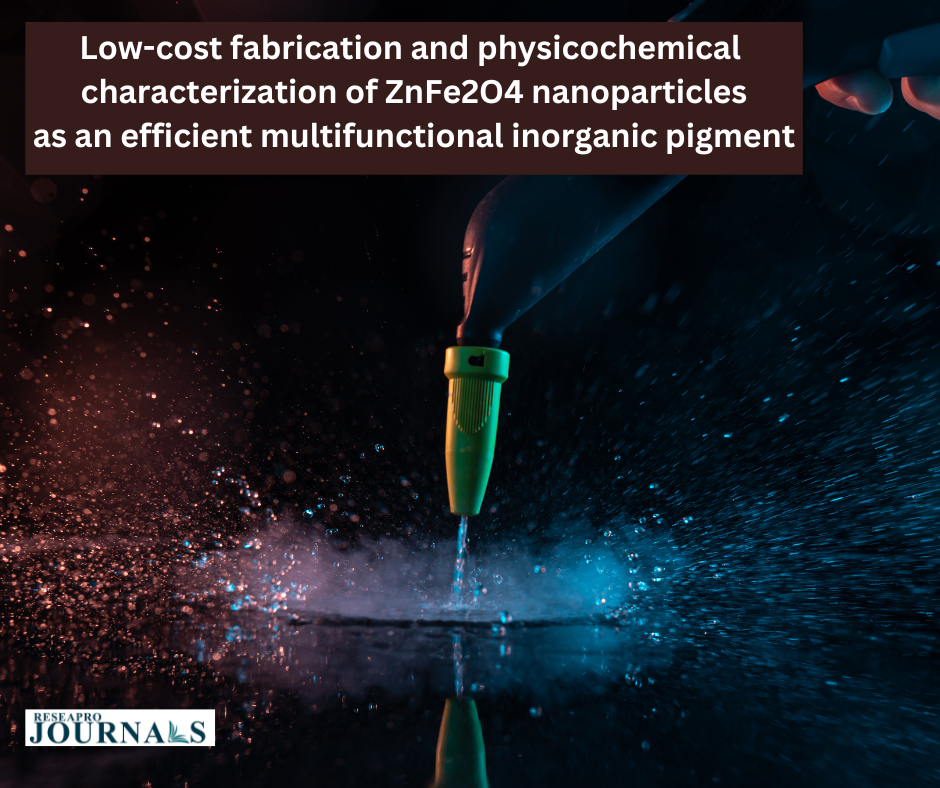|
Getting your Trinity Audio player ready...
|
Pigments are essential components of paints, coatings, and dyes, influencing product aesthetics, functionality, and durability. Traditionally, inorganic pigments like iron oxides have dominated the market, but concerns about resource limitations and environmental impact have spurred the search for alternatives. ZnFe2O4 nanoparticles (ZF-NPs) emerge as a promising candidate due to their unique properties and potential for low-cost fabrication. This essay explores the low-cost fabrication techniques, physicochemical characterization, and potential applications of ZF-NPs as efficient multifunctional inorganic pigments.
Low-Cost Fabrication Techniques:
Several methods exist for ZF-NP synthesis, but cost-effectiveness is crucial for their widespread adoption. The sol-gel method appears particularly promising due to its simplicity, scalability, and use of readily available precursors like zinc and iron salts. This method involves the formation of a homogenous sol, followed by gelation and calcination at moderate temperatures. Other techniques like co-precipitation and hydrothermal synthesis might also be applicable, with suitable optimization for cost-efficiency.
Physicochemical Characterization:
Understanding the physicochemical properties of ZF-NPs is essential for tailoring their pigmenting efficiency. Techniques like X-ray diffraction (XRD) confirm the spinel structure and crystallinity of the nanoparticles. Scanning electron microscopy (SEM) visualizes the morphology and size distribution, while transmission electron microscopy (TEM) provides high-resolution images for detailed analysis. Brunauer-Emmett-Teller (BET) surface area analysis quantifies the available surface for pigment adsorption, and diffuse reflectance spectroscopy (DRS) reveals the light absorption and color properties of ZF-NPs.
Multifunctional Applications:
Beyond their vivid reddish color, ZF-NPs demonstrate several functional benefits as pigments. Their high surface area offers strong binding to substrate materials, leading to improved coating adhesion and durability. Additionally, ZF-NPs exhibit UV absorption and photocatalytic activity, potentially enhancing the anti-microbial and self-cleaning properties of coatings. Furthermore, their magnetic properties might enable novel functionalities like controlled release of pigments or targeted application in specific areas.
Conclusion:
The combination of low-cost fabrication, versatile physicochemical properties, and diverse functionalities makes ZF-NPs a promising contender in the next generation of inorganic pigments. Continued research and development in optimization, large-scale production, and exploration of new applications can unlock the full potential of these multifunctional nanoparticles for sustainable and efficient pigment technologies.




